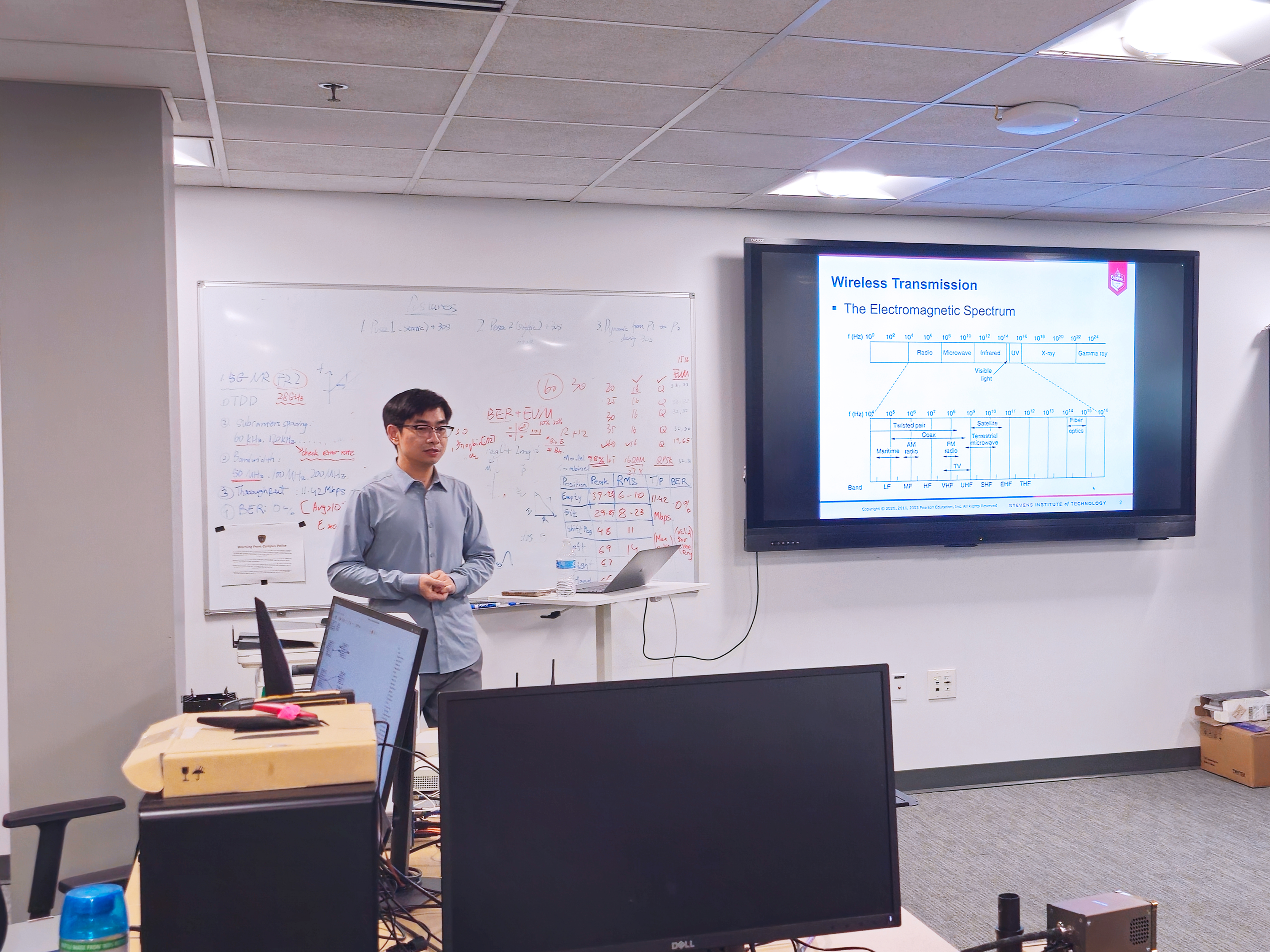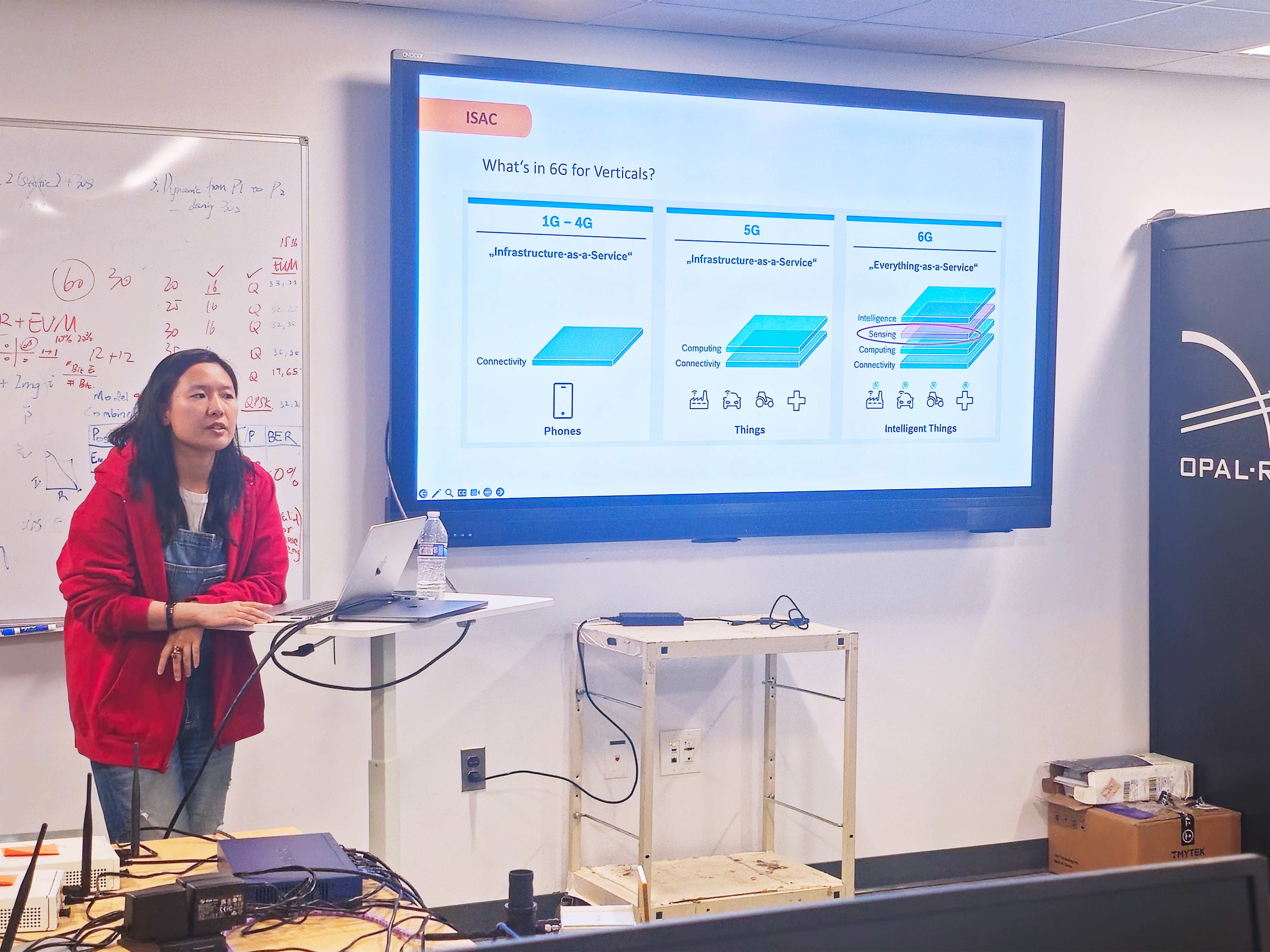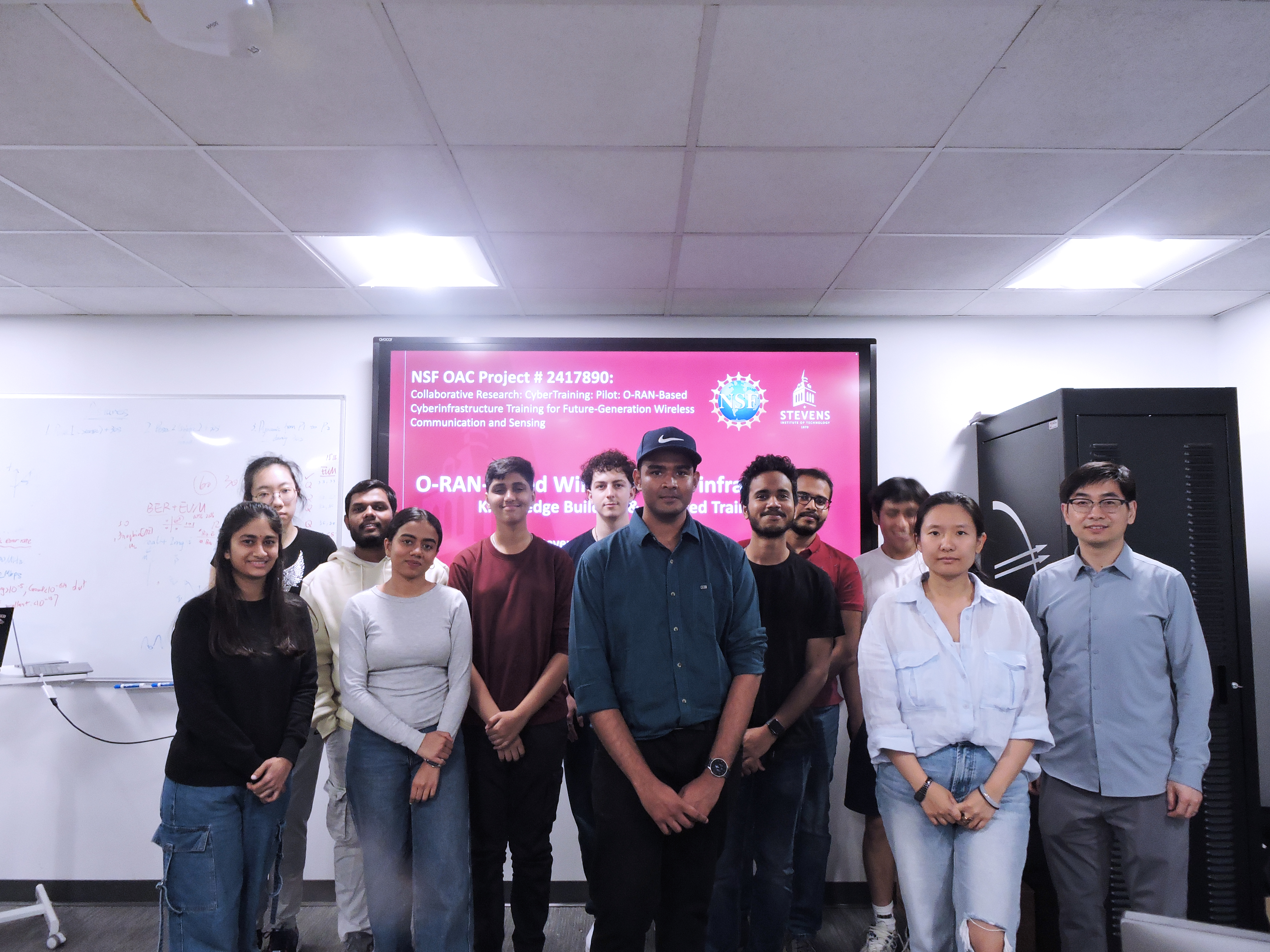NSF CyberTraining: O-RAN-Based Cyberinfrastructure for Future-Generation Wireless Communication and Sensing
Published:
At Stevens Institute of Technology, we held a month-long, NSF CyberTraining workshop designed to train Master’s students in next-generation wireless technologies. The program emphasized hands-on learning across key areas such as Software-Defined Radios (SDRs), mmWave sensing, Integrated Sensing and Communication (ISAC), and Open Radio Access Networks (O-RAN). Through intensive weekly sessions covering the theoretical concepts and practical applications, participants engaged directly with real-world experimental platforms to build both foundational knowledge and technical fluency in advanced wireless systems.
Spanning four weeks, the program was structured to progressively build hands-on experience across:
📑 Topics We Covered
Participants will dive into:
- Week 1: USRP configuration and GNU Radio basics for Software-Defined Radios (SDR).
- Week 2: FMCW waveform generation, live radar deployment and data collection.
- Week 3: FMCW signal processing pipeline design for respiration monitoring.
- Week 4: O-RAN architecture, Near-RT RIC deployment, and xApp-based experimentation.
Throughout the program, students will explore concepts of 28 GHz mmWave sensing, xApp development and deployment within O-RAN architectures, and Integrated Sensing and Communication (ISAC) systems.
Gallery

Foundational wireless system concepts presented by Prof. Shucheng Yu.

ISAC concepts taught by Prof. Xiaochan Xue.

NSF CyberTraining 2025 – Team Photo